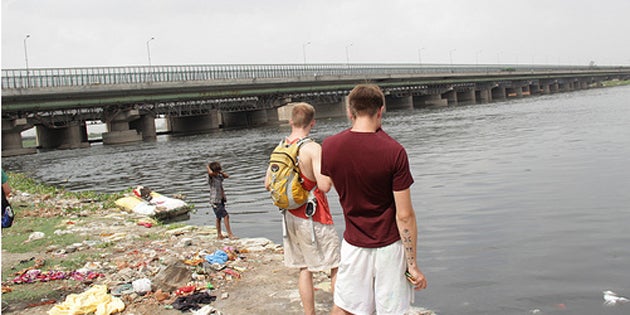About a dozen geology students from the College of Charleston traveled this summer to the Yamuna River near New Delhi to get a first hand look at the extent of water problems facing India.
“The burgeoning population in mega-cities such as New Delhi places enormous pressure on water resources, while the local and state government is relatively ineffectual in providing safe drinking water for their citizens,” says Geology professor Vijay M. Vulava. “Our students also learned about the role that nonprofits, such as the Yamuna Waterkeeper, play in raising awareness among the common populace about water pollution and its link to societal well being. It was an eye-opening experience for all our students.”
The trip was made possible because of the Geology department’s long relationship with the Charleston Waterkeeper. For years, students from the College of Charleston have been working closely with the Charleston Waterkeeper to monitor water quality in the Charleston harbor, area beaches and tidal creeks. Using the Waterkeeper organization, the group was able to connect with the Yamuna Waterkeeper and coordinate a trip to study water resources and pollution in India.
“The students that went with us are part of the Study Abroad class to northern India that Professor Tim Callahan and I teach every other year,” says Vulava. “This class focuses on water resources and pollution in developing countries using the example of the entire stretch of the Ganges River from the glacial headwaters in the Himalayas to the mouth of the river near the Bay of Bengal. The students not only learned a wide range of scientific issues regarding water use in India, but also the role that the government and the Indian culture plays on how water is used in this part of the world.”
RELATED: Read “In Deep: A Love Story Written in Water“
Two-thirds of India’s population lives in the Northern and Eastern part of India and is enormously reliant on the Ganges River and its several tributaries such as the Yamuna River for its potable water, farming, industries, waste disposal, and energy production.




